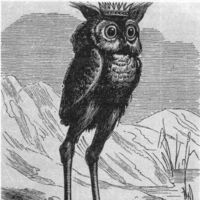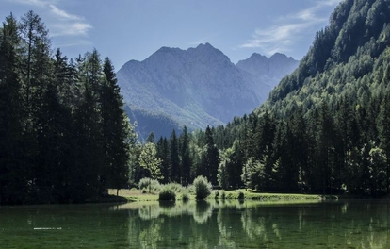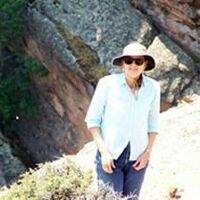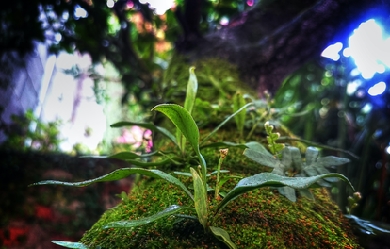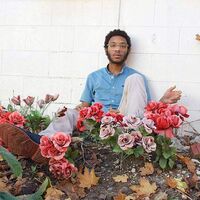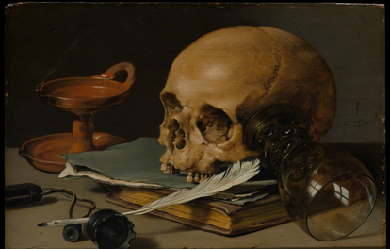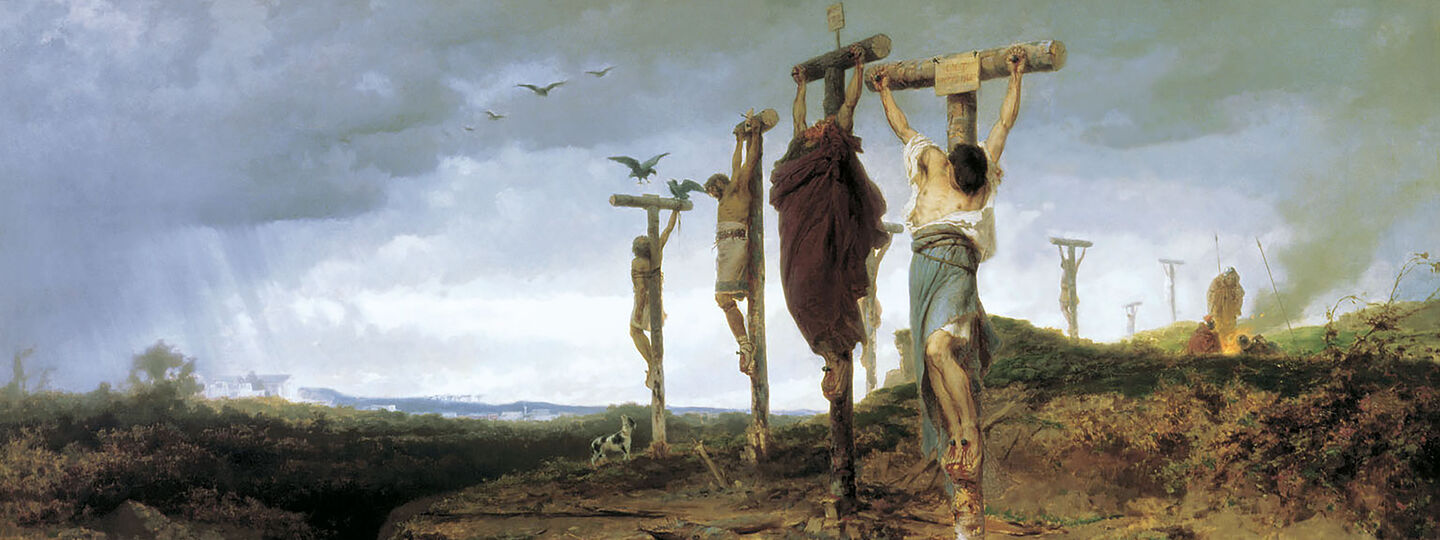
Info
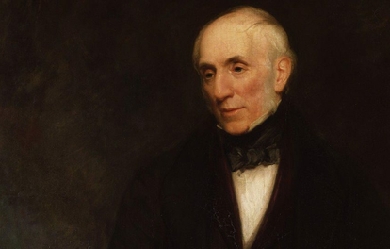
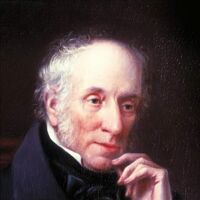
William Wordsworth (7 April 1770 – 23 April 1850) was a major English Romantic poet who, with Samuel Taylor Coleridge, helped to launch the Romantic Age in English literature with the 1798 joint publication Lyrical Ballads. Wordsworth's magnum opus is generally considered to be The Prelude, a semiautobiographical poem of his early years which he revised and expanded a number of times. It was posthumously titled and published, prior to which it was generally known as the poem "to Coleridge". Wordsworth was Britain's Poet Laureate from 1843 until his death in 1850. Early life The second of five children born to John Wordsworth and Ann Cookson, William Wordsworth was born on 7 April 1770 in Wordsworth House in Cockermouth, Cumberland—part of the scenic region in northwest England, the Lake District. His sister, the poet and diarist Dorothy Wordsworth, to whom he was close all his life, was born the following year, and the two were baptised together. They had three other siblings: Richard, the eldest, who became a lawyer; John, born after Dorothy, who went to sea and died in 1805 when the ship of which he was Master, the Earl of Abergavenny, was wrecked off the south coast of England; and Christopher, the youngest, who entered the Church and rose to be Master of Trinity College, Cambridge. Their father was a legal representative of James Lowther, 1st Earl of Lonsdale and, through his connections, lived in a large mansion in the small town. Wordsworth, as with his siblings, had little involvement with their father, and they would be distant from him until his death in 1783. Wordsworth's father, although rarely present, did teach him poetry, including that of Milton, Shakespeare and Spenser, in addition to allowing his son to rely on his own father's library. Along with spending time reading in Cockermouth, Wordsworth would also stay at his mother's parents house in Penrith, Cumberland. At Penrith, Wordsworth was exposed to the moors. Wordsworth could not get along with his grandparents and his uncle, and his hostile interactions with them distressed him to the point of contemplating suicide. After the death of their mother, in 1778, John Wordsworth sent William to Hawkshead Grammar School in Lancashire and Dorothy to live with relatives in Yorkshire; she and William would not meet again for another nine years. Although Hawkshead was Wordsworth's first serious experience with education, he had been taught to read by his mother and had attended a tiny school of low quality in Cockermouth. After the Cockermouth school, he was sent to a school in Penrith for the children of upper-class families and taught by Ann Birkett, a woman who insisted on instilling in her students traditions that included pursuing both scholarly and local activities, especially the festivals around Easter, May Day, and Shrove Tuesday. Wordsworth was taught both the Bible and the Spectator, but little else. It was at the school that Wordsworth was to meet the Hutchinsons, including Mary, who would be his future wife. Wordsworth made his debut as a writer in 1787 when he published a sonnet in The European Magazine. That same year he began attending St John's College, Cambridge, and received his B.A. degree in 1791. He returned to Hawkshead for his first two summer holidays, and often spent later holidays on walking tours, visiting places famous for the beauty of their landscape. In 1790, he took a walking tour of Europe, during which he toured the Alps extensively, and visited nearby areas of France, Switzerland, and Italy. Relationship with Annette Vallon In November 1791, Wordsworth visited Revolutionary France and became enthralled with the Republican movement. He fell in love with a French woman, Annette Vallon, who in 1792 gave birth to their child, Caroline. Because of lack of money and Britain's tensions with France, he returned alone to England the next year. The circumstances of his return and his subsequent behaviour raise doubts as to his declared wish to marry Annette, but he supported her and his daughter as best he could in later life. The Reign of Terror estranged him from the Republican movement, and war between France and Britain prevented him from seeing Annette and Caroline again for several years. There are strong suggestions that Wordsworth may have been depressed and emotionally unsettled in the mid-1790s. With the Peace of Amiens again allowing travel to France, in 1802 Wordsworth and his sister, Dorothy, visited Annette and Caroline in Calais. The purpose of the visit was to pave the way for his forthcoming marriage to Mary Hutchinson, and a mutually agreeable settlement was reached regarding Wordsworth's obligations. Afterwards he wrote the poem "It is a beauteous evening, calm and free," recalling his seaside walk with his daughter, whom he had not seen for ten years. At the conception of this poem, he had never seen his daughter before. The occurring lines reveal his deep love for both child and mother. First publication and Lyrical Ballads In his "Preface to Lyrical Ballads", which is called the "manifesto" of English Romantic criticism, Wordsworth calls his poems "experimental." The year 1793 saw Wordsworth's first published poetry with the collections An Evening Walk and Descriptive Sketches. He received a legacy of £900 from Raisley Calvert in 1795 so that he could pursue writing poetry. That year, he met Samuel Taylor Coleridge in Somerset. The two poets quickly developed a close friendship. In 1797, Wordsworth and his sister Dorothy moved to Alfoxton House, Somerset, just a few miles away from Coleridge's home in Nether Stowey. Together, Wordsworth and Coleridge (with insights from Dorothy) produced Lyrical Ballads (1798), an important work in the English Romantic movement. The volume gave neither Wordsworth's nor Coleridge's name as author. One of Wordsworth's most famous poems, "Tintern Abbey", was published in the work, along with Coleridge's "The Rime of the Ancient Mariner". The second edition, published in 1800, had only Wordsworth listed as the author, and included a preface to the poems, which was augmented significantly in the 1802 edition. This Preface to Lyrical Ballads is considered a central work of Romantic literary theory. In it, Wordsworth discusses what he sees as the elements of a new type of poetry, one based on the "real language of men" and which avoids the poetic diction of much 18th-century poetry. Here, Wordsworth gives his famous definition of poetry as "the spontaneous overflow of powerful emotions recollected in tranquility: it takes its origin from emotion recollected in tranquility." A fourth and final edition of Lyrical Ballads was published in 1805. The Borderers From 1795 to 1797, he wrote his only play, The Borderers, a verse tragedy set during the reign of King Henry III of England when Englishmen of the north country were in conflict with Scottish rovers. Wordsworth attempted to get the play staged in November 1797, but it was rejected by Thomas Harris, theatre manager of Covent Garden, who proclaimed it "impossible that the play should succeed in the representation". The rebuff was not received lightly by Wordsworth, and the play was not published until 1842, after substantial revision. Germany and move to the Lake District Wordsworth, Dorothy and Coleridge travelled to Germany in the autumn of 1798. While Coleridge was intellectually stimulated by the trip, its main effect on Wordsworth was to produce homesickness. During the harsh winter of 1798–99, Wordsworth lived with Dorothy in Goslar, and, despite extreme stress and loneliness, he began work on an autobiographical piece later titled The Prelude. He wrote a number of famous poems, including "The Lucy poems". He and his sister moved back to England, now to Dove Cottage in Grasmere in the Lake District, and this time with fellow poet Robert Southey nearby. Wordsworth, Coleridge and Southey came to be known as the "Lake Poets". Through this period, many of his poems revolve around themes of death, endurance, separation and grief. Marriage and children In 1802, after Wordsworth's return from his trip to France with Dorothy to visit Annette and Caroline, Lowther's heir, William Lowther, 1st Earl of Lonsdale, paid the ₤4, debt owed to Wordsworth's father incurred through Lowther's failure to pay his aide. Later that year, on October 4, Wordsworth married a childhood friend, Mary Hutchinson. Dorothy continued to live with the couple and grew close to Mary. The following year, Mary gave birth to the first of five children, three of whom predeceased William and Mary: * John Wordsworth (18 June 1803 – 1875). * Dora Wordsworth (16 August 1804 – 9 July 1847). * Thomas Wordsworth (15 June 1806 – 1 December 1812). * Catherine Wordsworth (6 September 1808 – 4 June 1812). * William "Willy" Wordsworth (12 May 1810 – 1883). Autobiographical work and Poems in Two Volumes Wordsworth had for years been making plans to write a long philosophical poem in three parts, which he intended to call The Recluse. He had in 1798–99 started an autobiographical poem, which he never named but called the "poem to Coleridge", which would serve as an appendix to The Recluse. In 1804, he began expanding this autobiographical work, having decided to make it a prologue rather than an appendix to the larger work he planned. By 1805, he had completed it, but refused to publish such a personal work until he had completed the whole of The Recluse. The death of his brother, John, in 1805 affected him strongly. The source of Wordsworth's philosophical allegiances as articulated in The Prelude and in such shorter works as "Lines composed a few miles above Tintern Abbey" has been the source of much critical debate. While it had long been supposed that Wordsworth relied chiefly on Coleridge for philosophical guidance, more recent scholarship has suggested that Wordsworth's ideas may have been formed years before he and Coleridge became friends in the mid 1790s. While in Revolutionary Paris in 1792, the 22-year-old Wordsworth made the acquaintance of the mysterious traveller John "Walking" Stewart (1747–1822), who was nearing the end of a thirty-years' peregrination from Madras, India, through Persia and Arabia, across Africa and all of Europe, and up through the fledgling United States. By the time of their association, Stewart had published an ambitious work of original materialist philosophy entitled The Apocalypse of Nature (London, 1791), to which many of Wordsworth's philosophical sentiments are likely indebted. In 1807, his Poems in Two Volumes were published, including "Ode: Intimations of Immortality from Recollections of Early Childhood". Up to this point Wordsworth was known publicly only for Lyrical Ballads, and he hoped this collection would cement his reputation. Its reception was lukewarm, however. For a time (starting in 1810), Wordsworth and Coleridge were estranged over the latter's opium addiction. Two of his children, Thomas and Catherine, died in 1812. The following year, he received an appointment as Distributor of Stamps for Westmorland, and the £400 per year income from the post made him financially secure. His family, including Dorothy, moved to Rydal Mount, Ambleside (between Grasmere and Rydal Water) in 1813, where he spent the rest of his life. The Prospectus In 1814 he published The Excursion as the second part of the three-part The Recluse. He had not completed the first and third parts, and never would. He did, however, write a poetic Prospectus to "The Recluse" in which he lays out the structure and intent of the poem. The Prospectus contains some of Wordsworth's most famous lines on the relation between the human mind and nature: My voice proclaims How exquisitely the individual Mind (And the progressive powers perhaps no less Of the whole species) to the external World Is fitted:--and how exquisitely, too, Theme this but little heard of among Men, The external World is fitted to the Mind. Some modern critics[who?] recognise a decline in his works beginning around the mid-1810s. But this decline was perhaps more a change in his lifestyle and beliefs, since most of the issues that characterise his early poetry (loss, death, endurance, separation and abandonment) were resolved in his writings. But, by 1820, he enjoyed the success accompanying a reversal in the contemporary critical opinion of his earlier works. Following the death of his friend the painter William Green in 1823, Wordsworth mended relations with Coleridge. The two were fully reconciled by 1828, when they toured the Rhineland together. Dorothy suffered from a severe illness in 1829 that rendered her an invalid for the remainder of her life. In 1835, Wordsworth gave Annette and Caroline the money they needed for support. The Poet Laureate and other honours Wordsworth received an honorary Doctor of Civil Law degree in 1838 from Durham University, and the same honour from Oxford University the next year. In 1842 the government awarded him a civil list pension amounting to £300 a year. With the death in 1843 of Robert Southey, Wordsworth became the Poet Laureate. He initially refused the honour, saying he was too old, but accepted when Prime Minister Robert Peel assured him "you shall have nothing required of you" (he became the only laureate to write no official poetry). When his daughter, Dora, died in 1847, his production of poetry came to a standstill. Death William Wordsworth died by re-aggravating a case of pleurisy on 23 April 1850, and was buried at St. Oswald's church in Grasmere. His widow Mary published his lengthy autobiographical "poem to Coleridge" as The Prelude several months after his death. Though this failed to arouse great interest in 1850, it has since come to be recognised as his masterpiece. Major works Lyrical Ballads, with a Few Other Poems (1798) * "Simon Lee" * "We are Seven" * "Lines Written in Early Spring" * "Expostulation and Reply" * "The Tables Turned" * "The Thorn" * "Lines Composed A Few Miles above Tintern Abbey" Lyrical Ballads, with Other Poems (1800) * Preface to the Lyrical Ballads * "Strange fits of passion have I known"[14] * "She Dwelt among the Untrodden Ways"[14] * "Three years she grew"[14] * "A Slumber Did my Spirit Seal"[14] * "I travelled among unknown men"[14] * "Lucy Gray" * "The Two April Mornings" * "Nutting" * "The Ruined Cottage" * "Michael" * "The Kitten At Play" Poems, in Two Volumes (1807) * "Resolution and Independence" * "I Wandered Lonely as a Cloud" Also known as "Daffodils" * "My Heart Leaps Up" * "Ode: Intimations of Immortality" * "Ode to Duty" * "The Solitary Reaper" * "Elegiac Stanzas" * "Composed upon Westminster Bridge, September 3, 1802" * "London, 1802" * "The World Is Too Much with Us" * Guide to the Lakes (1810) * The Excursion (1814) * Laodamia (1815, 1845) * The Prelude (1850) References Wikipedia – http://en.wikipedia.org/wiki/William_Wordsworth
Si no crees en la poesía, es porque no crees en la belleza ni en el mundo ni en el universo. No existe ningún límite para la creación: mira la Naturaleza. La palabra nos permite transitar más allá de la memoria, de las emociones; la palabra nos puede acercar a la luz y al extravío; pero lo más importante de la palabra es que nos ayuda a encontrar el sentido, que es más que la simple dirección de lo que ocurre, es también el alma de la rutina. Carlos Arturo Arbeláez Cano (Manizales, 1953) Escritor colombiano. Ha publicado Cuento, poesía, crónica periodística y ensayo en periódicos y revistas. Libros: Aconteceres y Nostalgias: poemas extraviados, 2017. Resumen total de la melancolía: poemas en contravía,2018. Apuntes críticos sobre una Colombia desdibujada: ensayos callejeros, 2019. Paisaje para funámbulos: poemas de la pandemia, 2020. Transiciones y Transgresiones: poemas rutinarios, 2020. Hablan los muros: poema y resistencia, 2021. La mecánica del alma: poema en movimiento, 2022. EXILIOS: poemas del desarraigo, 2023. Todas estas obras buscando un sello editorial para dejar de ser un "poeta huérfano". Ingeniero y Geógrafo. Se desempeñó en la función pública, la empresa privada y la docencia. Residencia: Calle 44C #45-53 Bogotá, Colombia. Celular. +57-3156492463 correo electrónico: [email protected]
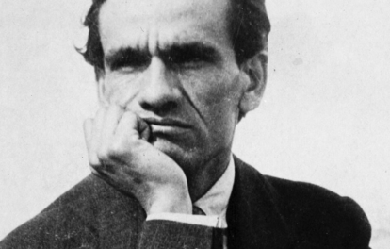
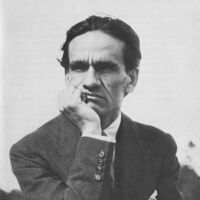
CÉSAR VALLEJO (1892-1938) Decimosegundo hijo de la familia Vallejo Mendoza, César Abraham Vallejo, nace en marzo de 1892, en Santiago de Chuco (3,500 metros de altitud) más gran aldea que ciudad de la cordillera peruana. Alumno remarcable, será brillante estudiante. En 1910: Parte para Trujillo (4 días de viaje a caballo) y se inscribe en la Facultad de Filosofía y Letras. En 1911: La idea de hacerse médico lo lleva a Lima, pero pronto renuncia a la carrera médica y vuelve a Trujillo. Poco después entra a trabajar en la hacienda "Roma" (producción azucarera) de la que "saldrá marcado". . . y es que si el joven Vallejo está favorecido por un tratamiento reservado sólo a los empleados superiores y con un salario satisfactorio no puede sin embargo, no ver ni oír cuando apenas clarece el alba, llegar los peones (cerca de 4,000) en el inmenso patio y ahí ponerse en fila para pasar lista, y salir para los campos de caña, donde se extenuarán hasta el sol poniente, con un puñado de arroz como alimento. No puede asimismo saber que todos no son más que pobres criaturas salvajemente capturadas por siniestros enganchadores, y cobardemente retenidas por vida con el alcohol que, dominicalmente y a sabiendas se les vende a crédito. Irremediablemente endeudado vuelto en pocas semanas, insolvente su deuda, cubriendo rápidamente un número de daños superior al que va a vivir el peón tendrá que garantizar su deuda con esto que sólo le queda: sus hijos, nacidos o por nacer. . . Se comprende que el recuerdo de la hacienda "Roma" haya sido durable en un ser que como Vallejo, le obsesionaba la injusticia social En 1913: Renuncia a su empleo en la hacienda y nuevamente regresa a Trujillo. Con el año, que se abre, reanuda sus estudios (Letras y paralelamente estudios de Derecho) y consigue un puesto de profesor de colegio. El primer éxito que consigue Vallejo con su tesis "El Romanticismo en la Poesía Española" es completo. Rápidamente es adoptado por los intelectuales y artistas quienes, muy numerosos, forman un grupo inquieto, turbulento y audaz, cuya bohemia no es en Vallejo sino un hábito, publica sus primeros versos de origen didáctico imponiéndose (él) poco por el dinamismo y los rasgos humorísticos de su fuerte personalidad intelectual y artística. En 1917: Deja Trujillo por la capital dejando en esa un recuerdo profundo mezclado de un sentimiento de frustración. Un block de poemas compone todo su bagaje. En 1918: Triste e incolora llegada a Lima. Reacio a toda idea de economía, los algunos recursos traídos de Trujillo pronto se han agotado. Sin embargo, ya un tanto conocido en el medio intelectual entra en contacto con los periódicos y revistas que le publican uno que otro poema, consiguiendo, por otra parte y a tiempo, un puesto de director de colegio. Con el proyecto de conseguir el doctorado de Letras y de Derecho, prosigue sus estudios en la Universidad Nacional Mayor de San Marcos. Pero ya ha llevado su primer poemario al impresor. En el mes de agosto de ese mismo año, muere su madre, en Santiago de Chuco: poemas no a su madre, sino a "la" madre, una, universal. Aun habiendo impreso su primer libro quedará estancado por largos meses, en la espera de un prólogo que Valdelomar, muy en vista en aquella época, le ha prometido. Es finalmente que "Los Heraldos Negros" aparecerán no en 1918 como lo indica la edición sino en 1919 sin el prólogo tan esperado. Elogios entusiastas y primeros dardos. 1920: En agosto sale para Santiago de Chuco pasando por Huamachuco, pronunciando una conferencia que produce escándalo pero ahí llega sólo para verse mezclado en un sangriento conflicto local que degenera en incendio. En un impulso, bien característico de Vallejo se dirige en conciliador a los lugares del atentado. Su sola presencia le denuncia en el concepto de las autoridades, tan parciales como incompetentes. Acusado por incendiario y disturbios políticos con 19 mas, está buscado y detenido el 6 de Noviembre. Será absuelto y liberado el 26 de Febrero siguiente (1921). 1922: En junio Vallejo participa en un concurso cuyo premio gana con "Más allá de la vida y la muerte" que le permite hacer imprimir su segundo volumen de poemas "Trilce" entre cayos versos muchos han sido escritos en la carcel de Trajino y que aparecen cuando Chocano culmina según él mismo como el "Walt Whitman del Sur". . . Un solo testimonio favorable: el prólogo de la más ferviente admiración de Antenor Orrego y un comentario: el de L.A Sánchez que expresa con asombro.... ¿Porqué Vallejo ha escrito "Trilce"? . ha lanzado un libro incomprensible y estrambótico. Y vuelve a preguntarse: "Pero ¿por qué habrá escrito "Trilce" Vallejo?, obra que será medio siglo mas tarde objeto de un insuperable estudio de 565 páginas, por el Dr. Neale-Silva: Chileno catedrático de la Universidad de Wisconsin. En 1923: Aparecen "Fabla salvaje" y "Escalas melografiadas". En junio, Vallejo que proyecta su evasión desde 1920 y, sobre todo, desde la aparición de 'Trilce", se embarca para Europa, con una moneda de 500 soles, un águila de oro anudada en su pañuelo. Ignorando el idioma, sin recursos ni relaciones y sin sombra de perspectivas, llega en julio a Paris, un viernes 13. Dos años va a pasar una vida de duras penurias hasta escapando con las justas de la muerte debida a una hemorragia consecutiva a una intervención quirúrgica. En 1924: Muerte de su padre de la que se entera, en París, por los periódicos. Un escultor de Costa Rica, Max Jiménez le deja su "atelier" de la calle Vercingétorix, aliviándole aunque muy relativamente, su apremiante situación económica. Sus relaciones sin embargo se extienden. Viene a conocer al escultor José de Creft quien expone tres perfiles de Vallejo. Conoce a Juan Gris estableciéndose entre ambos una grata amistad que cortará en 1927 la muerte prematura del gran pintor a la edad de 40 años y más tarde conoce al hijo de Jongkind y a Waldo Franck. Y al azar de los años y más o menos de paso, conocerá a Lipchitz, Unamuno, Dullin, Barrault, Tzara, Desnos, Portinari, entre otros (más entrevistas con personalidades como Gosset, Maiakovski, Reinhardt, Meyerhold, como lo indica su labor periodistica). En 1925: En mayo se funda en Paris la empresa "Los grandes periódicos iberoamericanos", en la que consigue el puesto de secretario. Poco después emprende una serie de artículos para las revistas "Variedades" y "Mundial" de Lima, colaboraciones que se proseguirán hasta 1930. Por otra parte, obtiene por Pablo Abril de Vivero, una beca otorgada por el gobierno español (unas 300 pesetas mensuales) y en octubre viaja por primera vez a España. Por asegurada que esté su situación material - aunque relativamente- Vallejo experimenta un estado persistente de inestabilidad y de descontento de si mismo cuya causa no reside en su temperamento en extremo angustiado y apenas diferenciable en realidad del estado de crisis permanente a grado variable. sino en alguna laguna personal de orden moral. Vallejo quien como periodista tiene entrada a los teatros, conciertos, exposiciones y frecuenta por lo demás los cafés en boga exclama en el primer semestre de 1927: "Todo esto no es ni yo ni mi vida". 1927: Seria difícil admitir en que aquella época, Vallejo, quien va a tener 35 años, aún busca y se busca para sí solo. No. En abril, renuncia a su empleo de secretario en "Los grandes periódicos..." En septiembre, renuncia a su beca del gobierno español. Vallejo medita, se interroga. ¿hacia dónde va? ¿Cuál es su contribución humana a la vida de los hombres? Inquietud definida; primeros síntomas de la profunda crisis que pronto le afectará gravemente (1927 - 1928). Crisis moral de la conciencia indubitablemente, ya que es a raíz de ella que Vallejo entrevé haber detectado la causa de su agudo malestar: el alejamiento y la ignorancia de los problemas que más atormentan a la humanidad avasallada y sufrida en la cual vive. No obstante, se resiste a ver en el marxismo la solución de tan numerosos males secularmente pretendidos insolubles e irremediables, aunque, por otra parte, sospecha y presiente que un sistema enteramente nuevo, y no por azar unánimemente rechazado por los explotadores y los prepotentes, ha de implicar necesaria e ineludiblemente algún mejoramiento por primera vez real, palpable, fundamental para las masas trabajadoras y frustradas. Primeros estudios de observación del marxismo. 1928: El año no se abre con gratas perspectivas; Vallejo mismo con una lucidez conforme a su ética ha destruído el mínimo de seguridad tan duramente conseguido. Pronto muy seriamente enfermo tiene que retirarse a los alrededores de Paris para poder restablecerse, físicamente al menos. Transcurre el Verano. Más o menos repuesto en vísperas del otoño, y provisto de algunos conocimientos marxistas parte en octubre para la Unión Soviética. En noviembre está de vuelta en Paris. A fines de diciembre, ruptura con el Aprismo del que había sido sólo simpatizante y crea en Paris la célula marxista peruana. Julio 1923/24 - 1929 es la etapa artística de "Poemas en Prosa" "Contra el secreto profesional" y "Hacia reino de los Sciris", y es el período, aún apolítico, en que surge y se define con su primer viaje a la Unión Soviética (Oct.) la evolución ideológica revolucionaria de Vallejo. 1929-1930: Estudio profundizado del marxismo. Su ideología se cristaliza, trascendente, definitiva, afirmándose luego el militante, dentro del marxismo mas no dentro del comunismo. Octubre de 1929; segundo viaje a la U.R.S.S. A su vuelta inicia "El arte y la revolución", "Moscú contra Moscú" (obra teatral), más tarde intitulada "Entre dos orillas corre el río". No escribe poemas... En mayo de 1930 pasa un mes en España, donde concluye la segunda edición de "Trilce". El 2 de diciembre, está declarado como "indeseable" y expulsado del territorio francés. El 30 de Diciembre de 1930, parte para España. 1931: Situación material difícil en extremo. Trabajo intensivo como nunca antes. En el curso del año, asiste a la proclamación de la República (ni providencialmente ni solidario o entusiasta, contrariamente a lo que se ha asegurado) sino en perfecta indiferencia, no exenta de amargura, "Una revolución sin efusión de sangre -y la experiencia lo confirma- no es una revolución", afirma y mantiene Vallejo. Pese a ello, se inscribe al Partido Marxista Español, enseña las primeras nociones del marxismo a estudiantes obreros simpatizantes. Para remediar la precariedad material que le apremia traduce tres obras de escritores franceses. Escribe y logra publicar "El tungsteno' novela proletaria emergida de la Hacienda "Roma"... "Rusia en 1931", el éxito editorial mayor después de "Sin novedad en el frente" de Erich Remarque, tres ediciones en cuatro meses. Sobre pedido escribe "Paco Yunque", un cuento para niños que el editor rechaza por "demasiado triste"... En octubre de ese mismo año de 1931, tercer y último viaje a la Unión Soviética, donde roza la muerte por segunda vez desde su llegada a Europa, a unos cinco metros de un grave accidente del trabajo. El 30 está de vuelta. En grave situación material Vallejo, para resolver su problema económico, procura colocar "Moscú contra Moscú". Rechazado. Presenta "El arte y la revolución". Rechazado. Presenta otra pieza de teatro, "Lock out". Rechazado. Propone "Rusia contra el segundo plan quinquenal". Rechazado. Apenas emprendido y pese al reciente e innegable éxito de "Rusia en 1931". Pese a la calurosa ayuda de Carcia Lorca que le acompaña en todas sus gestiones, todas las tentativas fracasarán por la violencia e ideología de sus obras. Vallejo que había esperado mucho de su teatro, queda desconcertado. Decide su regreso a Francia y dejó España el 11 de Febrero de 1932. 1932. Tercera y última etapa en la trayectoria literaria de Vallejo. Etapa de "Poemas Humanos", "Colacho hermanos", "España aparta de mi este cáliz" y "La piedra cansada" "Poemas humanos" han nacido en la inmensa y lejana Unión Soviética con unas estrofas que escribe en el curso de su tercer viaje. Y se proseguirán algunos meses después con su llegada a Paris en febrero de 1932 hasta el 21 de noviembre de 1937. Paralelamente, en ningún momento se desvincula de los acontecimientos sociopolíticos. Aunque sólo "tolerado en territorio francés donde regresó clandestinamente asiste a una de las más peligrosas manifestaciones de aquella época contra "Las cruces de fuego" (partido de ultra derecha) con el riesgo de una nueva expulsión, irremediable ya ésta, ya que no podría regresar o de su muerte por las balas fascistas en la Plaza de la Concordia. Mas el tiempo transcurre y sus poemas se acumulan en el cajón, donde desde 1928, yacen "Poemas en Prosa". "A qué escribir poemas", exclama un día Vallejo, "¿Para qué y para quién? ¿Para el cajón?". . . Y leeremos después de su muerte. "Y, ya no puedo más con tanto cajón. . . " A principios de 1935 se decide sin embargo a proponer una selección de sus versos a un editor de Madrid quien aceptará la propuesta. Por extraña adversidad no le llegará la respuesta afirmativa a Vallejo -quien no insistía jamás- hasta que estuvo declarada la guerra civil en España. En 1936 Vallejo se resuelve políticamente a un "reposo forzado" diremos debido a la intransigencia que él opone a lo que llama "las medias tintas". Entre otras divergencias no podrá admitir un "frente popular". Pero la guerra civil surge en España (Julio 36) y ante la magnitud del acontecimiento, Vallejo depone toda discrepancia, colaborando de inmediato en la creación de "Comités de Defensa", meetings, colectas de fondo, emprende una serie de artículos en los que denuncia lo inicuo de la no-intervención, sólo provechosa al fascismo no tanto franquista que internacional. Mas el desarrollo en los acontecimientos aumentan su inquietud, y parte para Barcelona y Madrid en diciembre. El 31 está de regreso en Paris. Sus presentimientos no le han engañado y la angustia lo aparta de su obra poética. Llevado sin duda y a pesar suyo por una esperanza irreductible, prosigue sin embargo sus artículos contra el fascismo. Observa cómo la red de la pretendida no-intervención se cierra sobre el pueblo asesinado. El 2 de Julio, en un congreso internacional de escritores antifascistas parte nuevamente para España. Vallejo es nombrado delegado del Perú. Regresó el 12 del mismo mes. Durante el mes de Setiembre bruscamente surge de Vallejo el monólogo de meses interminables, en alrededor de 80 días escribe 25 poemas, los últimos de "Poemas Humanos" es a la misma España que dirige su plegaria y el exceso de su desesperación, "España, aparta de mi este cáliz". Durante diciembre escribe "La piedra cansada". El 31, al abrirse 1938, en Vallejo se ha quebrado extrañamente el poeta y el escritor. 1938: El domingo 13 de marzo, se tiende después del almuerzo para reposar un instante. Al día siguiente tiene fiebre. . . carece totalmente de apetito. . . amigos médicos compatriotas suyos le visitan recetándole una que otra pastilla sin tratarlo propiamente -Vallejo está mucho más grave de lo que ellos creen-. Paternal, pero despreocupado, Arias Schreiber, entre otros, exclama: ¡Nunca se hubiera visto morir a un hombre que sólo está cansado! Alertado por el Dr. Porras, por entonces delegado a S.D.N. la legación peruana en París decide el traslado de Vallejo a una clínica. Durante dos días Vallejo rechaza este traslado: "Si ésto me compromete". El 24 de marzo sin embargo, acepta por fin esta angustiosa pero imprescindible solución, y el médico Lejard, médico del ministro Calderón queda designado como único médico ejecutivo de Vallejo, quien tampoco atribuye mayor gravedad al estado de su paciente, quien por suprema desgracia "le cae mal".... Tendido en su último lecho, no habrá quien se sienta suficientemente garantizado por la genialidad de Vallejo, la que nacerá póstumamente, como para arriesgar unos 2 o 3 mil francos (de los antiguos ) para salvarle la vida. Después de dura agonía muere Vallejo el viernes santo, 15 de abril de 1938, a las 9 y 20 de la mañana. Sólo mas tarde se sabrá que Vallejo sucumbió a un muy viejo paludismo reaparecido después de 20 ó 25 años, a consecuencia de un estado general debilitado. Georgette de Vallejo Vine hacia él que no hay nadie en mi tumba. César Vallejo. César Vallejo ha muerto. Muerto está que yo lo vi en Montrouge, una tarde de abril. Iba con Carlos Espinosa, y llevábamos los Poemas humanos y España, aparta de mí que no hay nadie en mi tumba. este cáliz. Carlos leyó un poema, como si le escuchara Dios. Yo, llorando, leí Masa. Entonces todos los hombres de la tierra le rodearon; pero César Vallejo, ¡ay! siguió muriendo. Otero Silva Miguel LLanto de amor A César Vallejo Erguida pese a sus años con la mirada medio grisácea como el cielo limeño y evocando el tiempo tal vez su dolor o aquel Jueves Santo en un París lluvioso ese frío cerca al Sena cuando las manos temblorosas y cálidas de su querido César hablaban desde su alma pidiéndole volver aunque fuera cadåver a su tierra cobriza que se hacía bruma entre la tos y el sudor porque sabía de su pronta partida y del adiós a Georgette. Muchos del Perú no me querían pensaban que era poca cosa para él renegaban mis ideas que fueron con amor nuestra comunión popular convertidas en llantos nocturnos como si ambos estuviéramos en la cruz redimiendo penas de su pueblo muriendo lacerado por la explotación eran fervorosas confidencias de la emoción de Georgette. Cuántas veces confundió sus temblorosas manos entre las mías como queriendo transmitirme entre sus balbuceos y llanto el legado abandonado las promesas no cumplidas los oropeles de homenajes vanos y el olvido de ese su amado pueblo de su deseo postrero aún no realizado de dormir en terruño humilde y peruano. Ha transcurrido casi siete décadas todavía reposa Vallejo en Montparnasse duele aún de muerte gimen sus huesos Georgette dejó la vida defendió el ideal publicó su obra póstuma mas jamás pudo repatriar sus restos ella no paseará por el parque ni acariciará a su perrito seguirán sus pasos y su alma solitaria vagando por el edificio Marsano donde al salir los sábados le ayudaba a cruzar la calle tomándola de la mano para escuchar su clamor y su esperanza: él regresará cuando el Perú llore por amor. Addhemar H.M. Sierralta
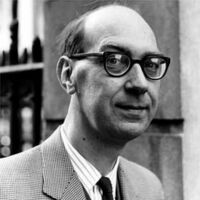
Philip Arthur Larkin (9 August 1922 – 2 December 1985) was an English poet and novelist. His first book of poetry, The North Ship, was published in 1945, followed by two novels, Jill (1946) and A Girl in Winter (1947), but he came to prominence in 1955 with the publication of his second collection of poems, The Less Deceived, followed by The Whitsun Weddings (1964) and High Windows (1974). He was the recipient of many honours, including the Queen's Gold Medal for Poetry. He was offered, but declined, the position of poet laureate in 1984, following the death of John Betjeman.
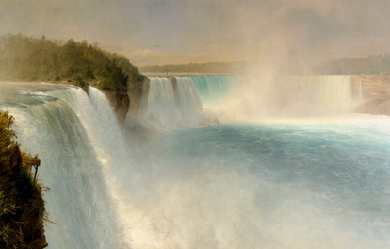
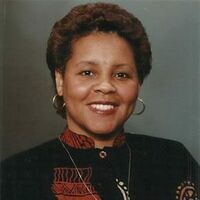
I am an American Patriot, a Believer, and a lover of God and Country. I am a widow, a mother of five children ❤️ and five grandchildren. ❤️ I’m very proud, and honored to have borne such loving, talented and hard working children. Being a Mother was my destiny. Being a writer is also part of my destiny that I truly thank God for. It’s a gift from God It was after my children were grown and left home that I became serious about writing. I have written a book titled (American Poetry and Music) that has been published by Christian Faith Publishing. Which can be purchased on Amazon.com, Barnes and Noble, and Thrift Books.com I get my inspiration from the Creator, and I go under the heading of H.S.I. Which stands for (Holy Spirit Inspiration) Some of these poems on Poeticous.com appear in my book . I am grateful for them allowing me to publish my poems on this site also. I’ve come to love this site very much. All Poems, and Original Music Videos on this site are my own original compositions, and are covered under U.S.Copyright laws.© 2024. For more info -You can find me on (Youtube) and (Facebook). Email no longer public, but if you message me from Facebook or here on Poeticous I’ll give it to you privately. No copyright infringement intended with any Pictures or videos used on these poetry pages. Some videos of artist I enjoy were obtained from Youtube, and some pictures are from Public Domain sites. Mostly they are the property of Poeticous I do not claim rights for any works except my own Original Work. Thank you, Charlotte B. Williams
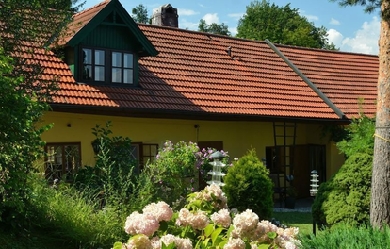
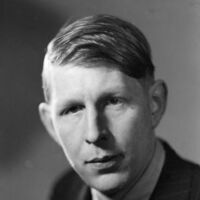
Wystan Hugh Auden (21 February 1907 – 29 September 1973), who published as W. H. Auden, was an Anglo-American poet, born in England, later an American citizen, regarded by many as one of the greatest writers of the 20th century. His work is noted for its stylistic and technical achievements, its engagement with moral and political issues, and its variety of tone, form and content. The central themes of his poetry are love, politics and citizenship, religion and morals, and the relationship between unique human beings and the anonymous, impersonal world of nature. Auden grew up in Birmingham in a professional middle class family and read English literature at Christ Church, Oxford. His early poems, written in the late 1920s and early 1930s, alternated between telegraphic modern styles and fluent traditional ones, were written in an intense and dramatic tone, and established his reputation as a left-wing political poet and prophet. He became uncomfortable in this role in the later 1930s, and abandoned it after he moved to the United States in 1939, where he became an American citizen in 1946. His poems in the 1940s explored religious and ethical themes in a less dramatic manner than his earlier works, but still combined traditional forms and styles with new forms devised by Auden himself. In the 1950s and 1960s many of his poems focused on the ways in which words revealed and concealed emotions, and he took a particular interest in writing opera librettos, a form ideally suited to direct expression of strong feelings.

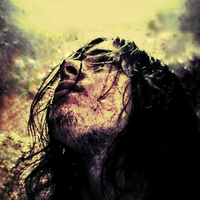
I am a 27-year-old Christian (the modern term for Follower of the Way). Some bands that I've drawn inspiration from include Demon Hunter, Skillet, Disturbed, Breaking Benjamin, All That Remains and War of Ages. I write lyrical poems, which I have been writing since I was 12 years old. A lot of my lyrics are based on life views and experiences, as well as struggles regarding my Christian faith. I am not ashamed and I will not shy away from admitting to my faith. I hope that my lyrics might open up solutions to readers that can relate to my lyrics. Thank you and God bless.
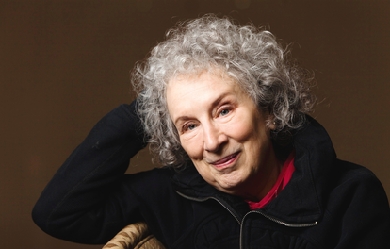
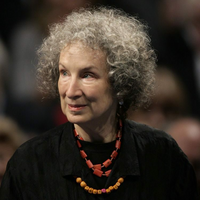
Margaret Eleanor Atwood (born November 18, 1939) is a Canadian poet, novelist, literary critic, essayist, teacher, environmental activist, and inventor. Since 1961, she has published 18 books of poetry, 18 novels, 11 books of non-fiction, nine collections of short fiction, eight children's books, and two graphic novels, and a number of small press editions of both poetry and fiction. Atwood has won numerous awards and honors for her writing, including two Booker Prizes, the Arthur C. Clarke Award, the Governor General's Award, the Franz Kafka Prize, Princess of Asturias Awards, and the National Book Critics and PEN Center USA Lifetime Achievement Awards. A number of her works have been adapted for film and television.

I'm a highly intelligent, articulate and well-educated human being with an intuitive but enterprising sense of responsibility and a strong moral compass that instinctively demarcates what's right and wrong. Trust, confidentiality and having the courage, regardless of what I do, to formulate and stand by my own personal convictions are key aspects of my life and, unsurprisingly, are also principal characteristics I attach great importance to and naturally expect from those who want to play a meaningful role in my life. I don't suffer fools gladly, in fact not at all and most definitely haven’t got any interest in or time for egotists, time-wasters, attention seekers or the narcissistic. Furthermore, I’m an adult and in my private and professional lives prefer to deal with genuine adults, so anyone who wants to act childishly and thinks they can have any kind of relationship with me, then you’re wrong! And my advice to you in that regard is to go and enrol in a kindergarten as you'll possibly have better luck there. My website is: www.politicoacademic.blogspot.com and my twitter feed if you're interested is: www.twitter.com/DerAkademiker
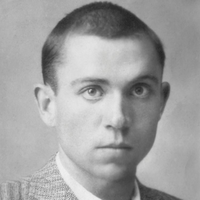
Miguel Hernández (Orihuela, 1910 – Alicante, 1942) Poeta español. Adscrito a la Generación del 27, destacó por la hondura y autenticidad de sus versos, reflejo de su compromiso social y político. Nacido en el seno de una familia humilde y criado en el ambiente campesino de Orihuela, de niño fue pastor de cabras y no tuvo acceso más que a estudios muy elementales, por lo que su formación fue autodidacta.
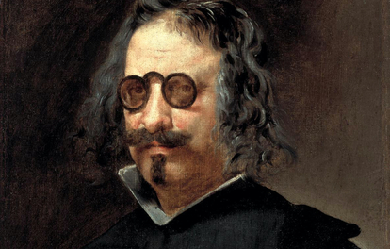
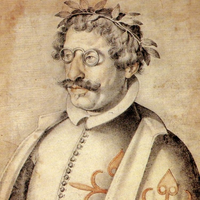
Francisco Gómez de Quevedo Villegas y Santibáñez Cevallos (Madrid, 14 de septiembre de 15801-Villanueva de los Infantes, Ciudad Real, 8 de septiembre de 1645) fue un noble, político y escritor español del Siglo de Oro. Fue caballero de la Orden de Santiago a partir de 16182 y señor de Torre de Juan Abad a partir de 1620.3 Junto con Luis de Góngora, con quien mantuvo una enemistad durante toda su vida, es reconocido como uno de los más notables poetas de la literatura española. Además de su poesía, fue un prolífico escritor de narrativa y teatro, así como de textos filosóficos y humanísticos. Salutación Mi señor don Francisco de Quevedo y Villegas, que con el verso esgrimes y con la esgrima juegas, haciendo –para orgullo del verso y de la esgrima– donaire del acero y acero de la rima: caballero bizarro de las nocturnas bregas, sabias prosas y empresas galantes y andariegas; cuya torcida planta huella la noble cima cortesana y el fondo canalla de la sima plebeya, con la misma genial desenvoltura: hidalgo aventurero de múltiple aventura (amor, poder, intriga, presión, peligro), terso, leal, como tu espada de amigo y de enemigo: en mi siniestra Torre de Juan Abad bendigo tu nombre, Caballero se Santiago y del Verso. —Alfredo Arvelo Larriva
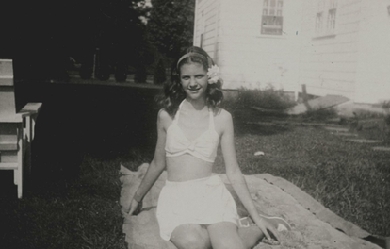
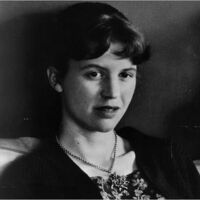
Sylvia Plath (October 27, 1932 – February 11, 1963) was an American poet, novelist and short story writer. Born in Boston, Massachusetts, she studied at Smith College and Newnham College, Cambridge before receiving acclaim as a professional poet and writer. She married fellow poet Ted Hughes in 1956 and they lived together first in the United States and then England, having two children together: Frieda and Nicholas. Following a long struggle with depression and a marital separation, Plath committed suicide in 1963. Controversy continues to surround the events of her life and death, as well as her writing and legacy. Plath is credited with advancing the genre of confessional poetry and is best known for her two published collections: The Colossus and Other Poems and Ariel. In 1982, she became the first poet to win a Pulitzer Prize posthumously, for The Collected Poems. She also wrote The Bell Jar, a semi-autobiographical novel published shortly before her death.

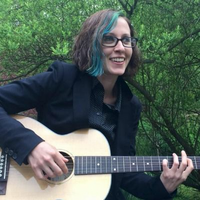
Love is the essence of pure thought. There is nowhere that this thought is not. I grew up in a small town in Oklahoma, just beyond the outskirts of several gypsum plateaus, miles of desert sand and vast horizons. I would go out into fields of sunflowers with my pen and paper, watching the currents of wind moving through miles and miles of wheat to write about the lucid imagery I would see when I closed my eyes, the experiences of coming out in a conservative community and finding my way as an artist in a place that did not nurture the arts. Words have always been my primary way to sort out my experiences into streams of consciousness that act as a form of self-discovery. Called by the overwhelming pull to follow my dreams, I relocated to the Catskills to follow my passions and put every idea into motion. I am currently working on several video projects, performances in several venues, live music, Sparkle Poetic radio ads, and many new things that you can keep up with on my website below. Welcome to the realm of words. Love is real. www.sparklepoetics.com
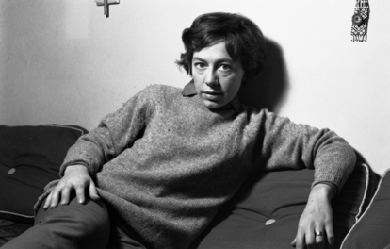

Flora Alejandra Pizarnik (Avellaneda, 29 de abril de 1936 – Buenos Aires, 25 de septiembre de 1972) fue una poetisa, ensayista y traductora argentina. Estudió filosofía y Letras en la Universidad de Buenos Aires y pintura con Juan Batlle Planas. Entre 1960 y 1964, Pizarnik vivió en París, donde trabajó para la revista Cuadernos y algunas editoriales francesas, publicó poemas y críticas en varios diarios y tradujo a Antonin Artaud, Henri Michaux, Aimé Césaire e Yves Bonnefoy. Además, estudió historia de la religión y literatura francesa en La Sorbona. Tras su retorno a Buenos Aires, Pizarnik publicó tres de sus principales volúmenes: Los trabajos y las noches, Extracción de la piedra de locura y El infierno musical, así como su trabajo en prosa La condesa sangrienta.
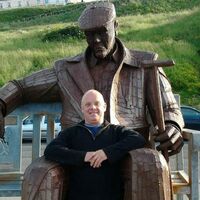
Welcome to my poetry page, I think its a blast, Some of my Poetry is about my past. Lots of wonderful words are written and funny, I don't get paid so it wont cost you money. My poems are of the wonders of life someone said I have written about the dead. Some people may be offended by some of my rhymes, So if your offended don't come back to read next time. But if my poetry makes you laugh please come back, Because this Yorkshire man has a sense of humour and can be really daft.
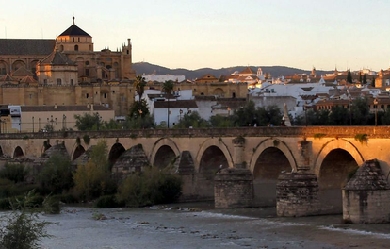
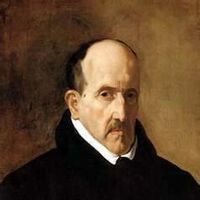
Luis de Góngora y Argote (Córdoba, 11 de julio de 1561 – ibídem, 23 de mayo de 1627) Poeta español. Nacido en el seno de una familia acomodada, estudió en la Universidad de Salamanca. Nombrado racionero en la catedral de Córdoba, desempeñó varias funciones que le brindaron la posibilidad de viajar por España. Su vida disipada y sus composiciones profanas le valieron pronto una amonestación del obispo (1588). Su fama fue enorme durante el Barroco, aunque su prestigio y el conocimiento de su obra decayeron luego hasta bien entrado el siglo XX, cuando la celebración del tercer centenario de su muerte (en 1927) congregó a los mejores poetas y literatos españoles de la época (conocidos desde entonces como la Generación del 27) y supuso su definitiva revalorización crítica.
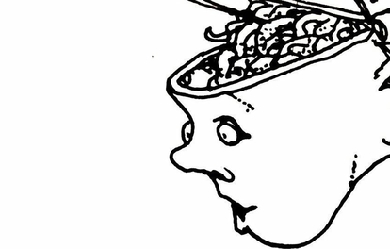
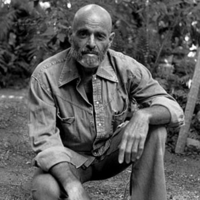
Sheldon Allan Shel Silverstein (September 25, 1930 – May 10, 1999), was an American poet, singer-songwriter, cartoonist, screenwriter, and author of children's books. He styled himself as Uncle Shelby in some works. Translated into more than 30 languages, his books have sold over 20 million copies.
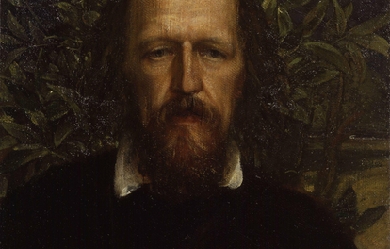
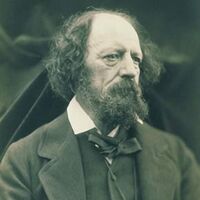
Alfred Tennyson, 1st Baron Tennyson, FRS (6 August 1809 – 6 October 1892) was Poet Laureate of the United Kingdom during much of Queen Victoria's reign and remains one of the most popular poets in the English language. A number of phrases from Tennyson’s work have become commonplaces of the English language, including “Nature, red in tooth and claw”, “'Tis better to have loved and lost / Than never to have loved at all”, “Theirs not to reason why, / Theirs but to do and die”, “My strength is as the strength of ten, / Because my heart is pure”, “Knowledge comes, but Wisdom lingers”, and “The old order changeth, yielding place to new”. He is the ninth most frequently quoted writer in The Oxford Dictionary of Quotations.
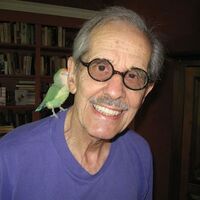
I was born in Hamilton, Ohio, in 1925, a confession that I am an old geezer. I served in the infantry during World War II, was wounded and discharged in 1946. I then obtained a B.A. degree with honors in English in 1949. Subsequently I taught in Cincinnati public schools and at the University of Cincinnati for the next 35 years. My poetry has appeared in: * Wall Street Journal * Hellas * Lyric * Envoi * Midwest Poetry Review (a sonnet won awards) * Aethlon * Light * Poet's View * Classical Outlook * Mind over Matter Several books have been self-published but Wormwood and Whines, a compilation of many of my poems, was published by Superior Books in 1999.
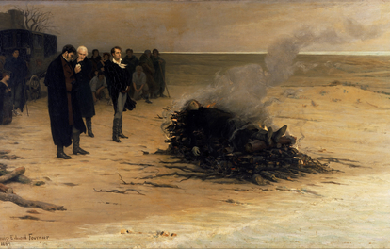
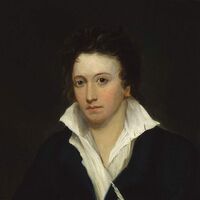
Percy Bysshe Shelley (4 August 1792 – 8 July 1822) was one of the major English Romantic poets and is critically regarded as among the finest lyric poets in the English language. Shelley was famous for his association with John Keats and Lord Byron. The novelist Mary Shelley (née Godwin) was his second wife. Shelley's unconventional life and uncompromising idealism, combined with his strong disapproving voice, made him a marginalized figure during his life, important in a fairly small circle of admirers, and opened him to criticism as well as praise afterward.

Frederic Ogden Nash (August 19, 1902 – May 19, 1971) was an American poet well known for his light verse. At the time of his death in 1971, The New York Times said his “droll verse with its unconventional rhymes made him the country’s best-known producer of humorous poetry”. Nash wrote over 500 pieces of comic verse. The best of his work was published in 14 volumes between 1931 and 1972.
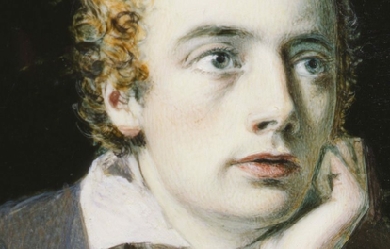
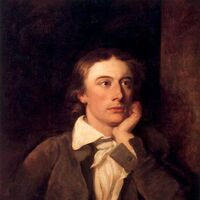
English Romantic poet John Keats was born on October 31, 1795, in London. The oldest of four children, he lost both his parents at a young age. His father, a livery-stable keeper, died when Keats was eight; his mother died of tuberculosis six years later. After his mother's death, Keats's maternal grandmother appointed two London merchants, Richard Abbey and John Rowland Sandell, as guardians. Abbey, a prosperous tea broker, assumed the bulk of this responsibility, while Sandell played only a minor role. When Keats was fifteen, Abbey withdrew him from the Clarke School, Enfield, to apprentice with an apothecary-surgeon and study medicine in a London hospital. In 1816 Keats became a licensed apothecary, but he never practiced his profession, deciding instead to write poetry.
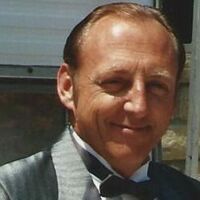
Worked in Manufacturing for 45 years. I am now a retired Tool&Die Maker. I am married with two grown children. I write poems, short stories, and some children's stories. I have published Poems in Quarterlies across the US in the 1980's, some awards and honorable mentions. My stories and some poems are now published on Booksie.com --- Author names = D. Thurmond --- & --- JE Falcon.



